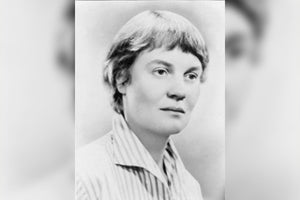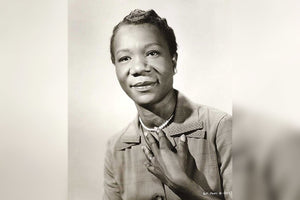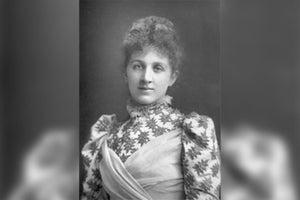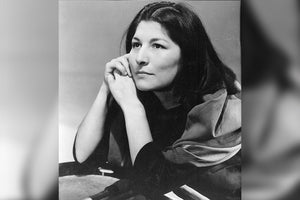Birthday: May 12, 1910
Who is Dorothy Hodgkin?
Dorothy Hodgkin is a Nobel Prize award winner chemist in X-ray crystallography. She was actively involved in structural biology by determining the biomolecular structure. Her most influential discoveries include confirming the form of penicillin and vitamin B12.
5 Facts about Dorothy Hodgkin
- Her interest in chemistry started at the age of 10.
- She was born in Cairo, Egypt, and spent a significant part of her life in North Africa and the Middle East.
- She was married to Thomas Lionel Hodgkin.
- She was the third woman to acquire a first-class honors degree in chemistry at Somerville College, Oxford.
- She tutored Margret Thatcher, who in the 1980s led the installation of Dorothy's portraits in 10 Downing Street.
Early Life
Dorothy Hodgkin was born on May 12, 1910, to John Winter crowfoot and Grace Mary Hood in Cairo, Egypt. Her parents instilled the traits of service and selflessness at a young age .
Dorothy Hodgkin's dad worked as a school inspector and an archeologist, while the mother, Grace, was a botanist who was fascinated by the flora in Sudan. Together with her three sisters, Dorothy spent a considerable amount of their young days with the grandparents while their parents worked abroad.
Her visits to Sudan gave her a chance to study pebbles in the streams together with her sisters. The experience diverted her interest from chemistry towards archeology. However, at the age of 15, Sir William Henry Bragg gifted her a copy of "Concerning the Nature of Things," which intrigued her desire and capability to study properties of atoms and molecules using X-ray.
Husband and Children
In 1937, Dorothy met a historian's son, Thomas Hodgkin, and they eventually got married. The marriage led to the birth of three children; Luke who became a mathematician, Elizabeth who was a historian, and Toby who pursued botany and biology.
Turning Point
When she was 16 years old, Dorothy got a present, a book about analyzing crystals using x-rays by William Henry Bragg. That made her develop an interest in crystallography. She joined Oxford University, where she studied chemistry so that she could pursue her interest in crystallography.
After that, she did doctoral work under a chemist named JD Bernal who was also a full supporter of equal opportunity for women. He advocated for more women to be included in the crystallography physical science.
Bernal took the first photograph of the x-ray of a protein crystal in 1934, which was an excellent achievement for organic molecules. Inspired by Bernal's discovery, Hodgkin started investigating the structure of insulin. She started working on vitamin B12, which she worked on for six years and finally completed in 1954. She was then awarded a Nobel Prize in 1964 for chemistry.
Mission and Work
Dorothy solved the molecular structure of insulin and penicillin that made it easier to manufacture a miracle drug. Pernicious anemia is treated with vitamin B12 that was manufactured in 1945 by Hodgkin. With the development of vitamin b12 in 1969, diabetes treatment is drastically being improved.
Legacy
The royal society appointed Dorothy as one of the fellows because of her excellent work. She was elected president of Pugwash conferences on the world's science and affairs with her determination to bridge the gap between social circles and resolve conflicts.
She also appeared on the issued series of British stamps as one of the five women of achievement in 1996. For a second time on the stamp, Dorothy appeared among the ten stamps chosen for the most applauded royal society members.
At the peak of her career, institutions invited her for talks at conferences and functions worldwide. She was honored by council offices. Some examples of council offices and institutions include; Keele University, council offices in the Borough of Hackney in London, and Bristol University.
To this day, she holds the title of being the only woman that received a Nobel Prize for science. In 1964, she was awarded as the solitary receiver of the chemistry prize for her dedication to x-ray techniques. The Nobel Prize increased her world's popularity, where she received enormous invitations and commitments.
In addition to all the awards she received for her exemplary discovery, she also received the Lomonosov Gold Medal in 1982. Mikhail Gorbachev's government also awarded her with the Lenin Peace Prize in 1987, and the Dimitrov Prize came from the communist government of Bulgaria.
Illness and Death
Dorothy was diagnosed with rheumatoid arthritis at the age of 24, which greatly affected her hands and feet. The sickness progressed with time until it reached a certain point where she was in a wheelchair for a significant amount of time.
Despite her illness, she still attended conferences and fulfilled her duties. A family member always accompanied her. Unfortunately, her invention could not save her, and in July 1994, she suffered a stroke at her husband's home and died.
![]() Fast Shipping
Fast Shipping![]() Subscribe to our Newsletter
Subscribe to our Newsletter![]() 🌟 New Global Competition 🌟
🌟 New Global Competition 🌟















